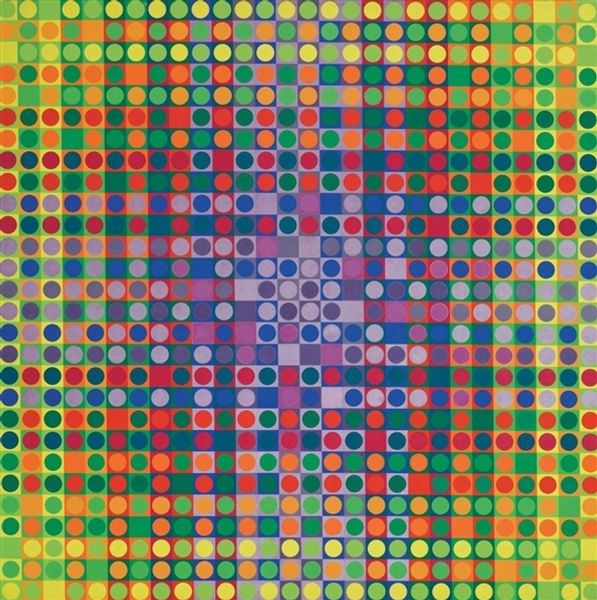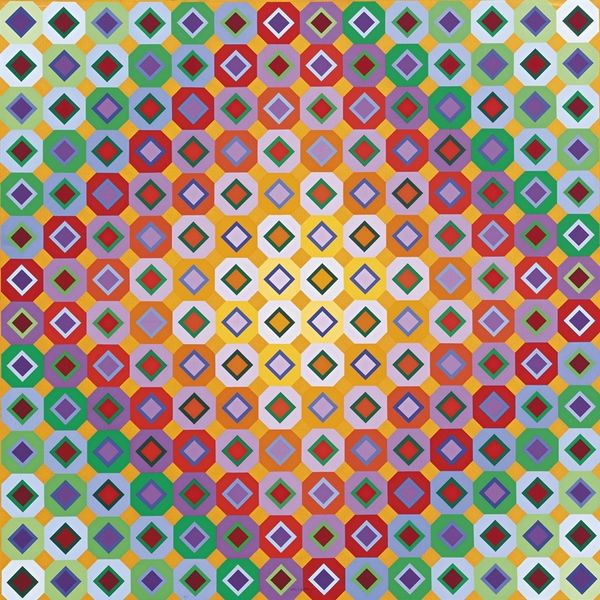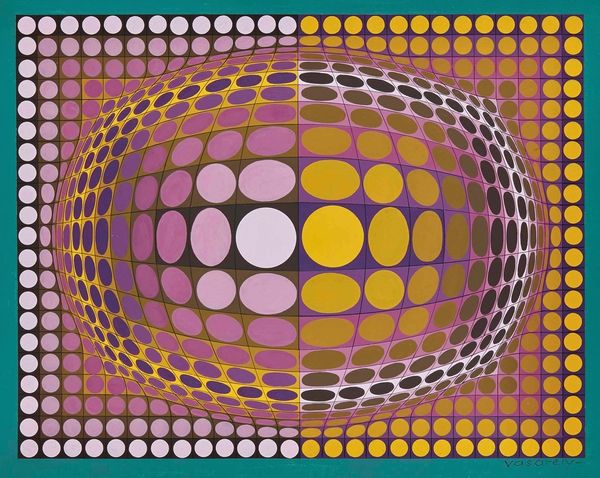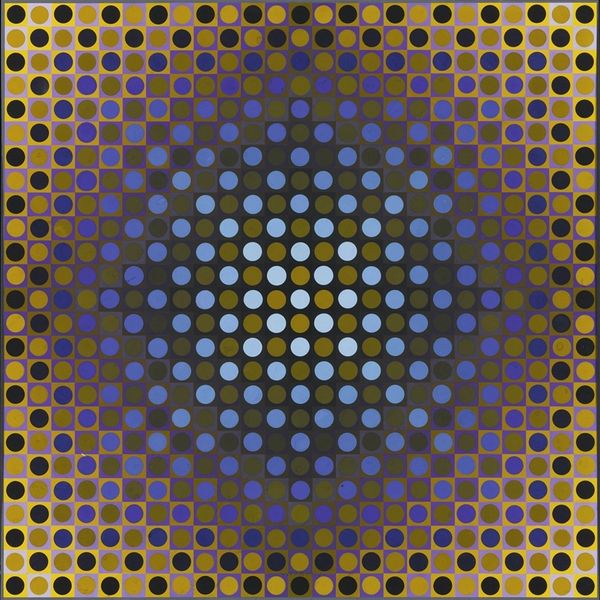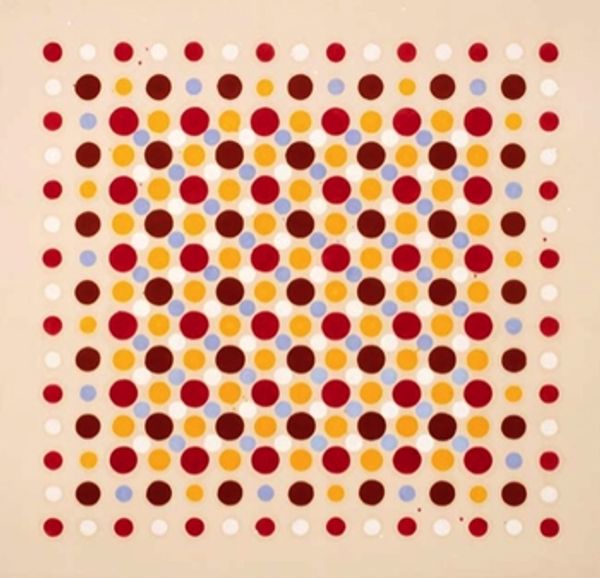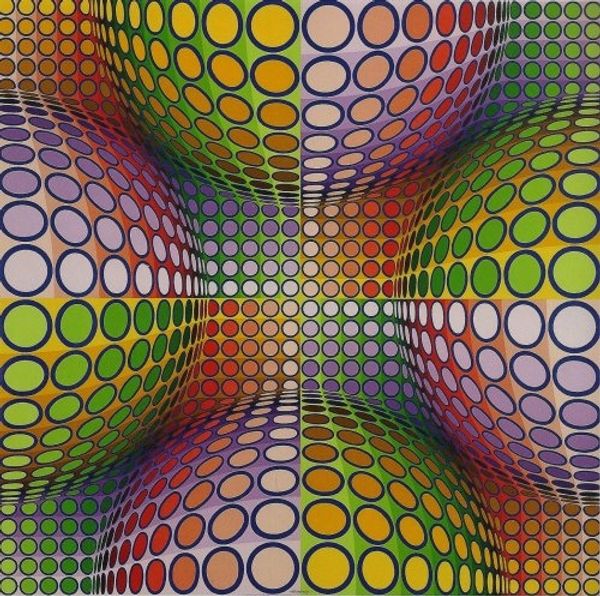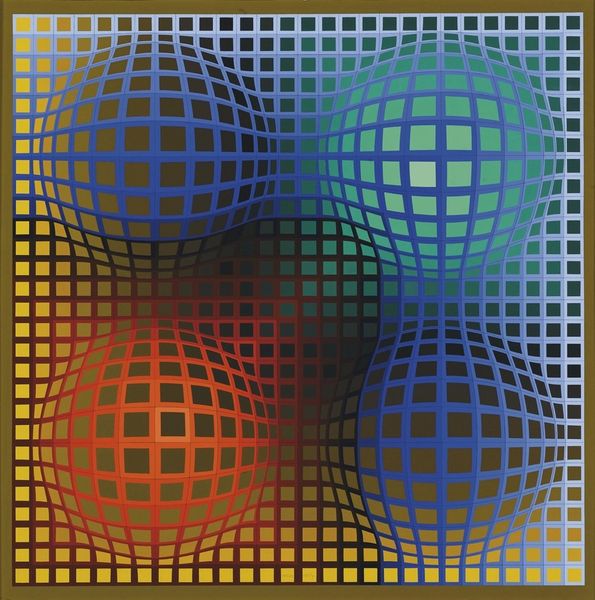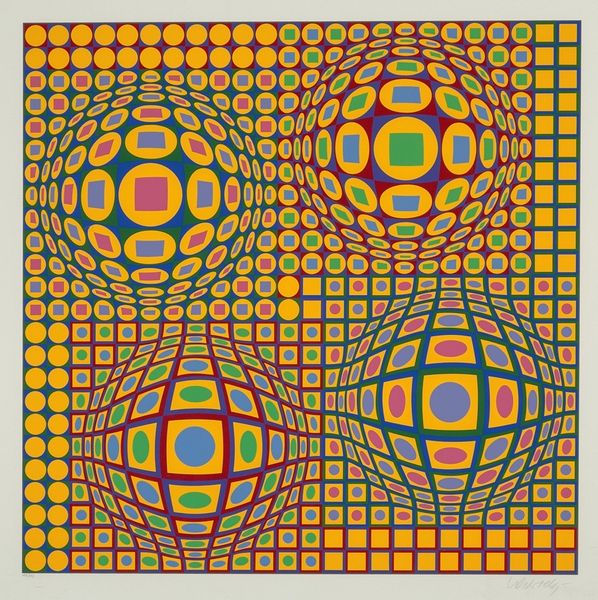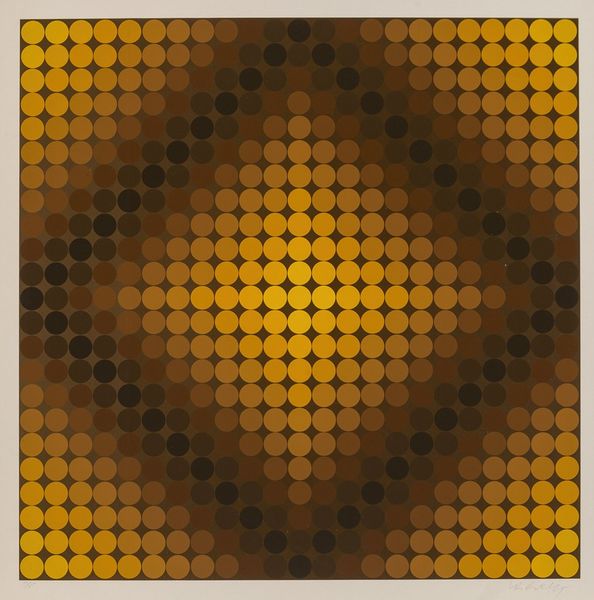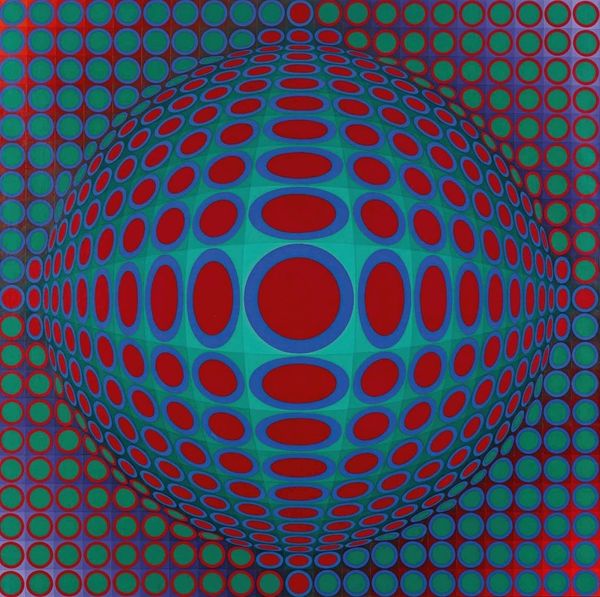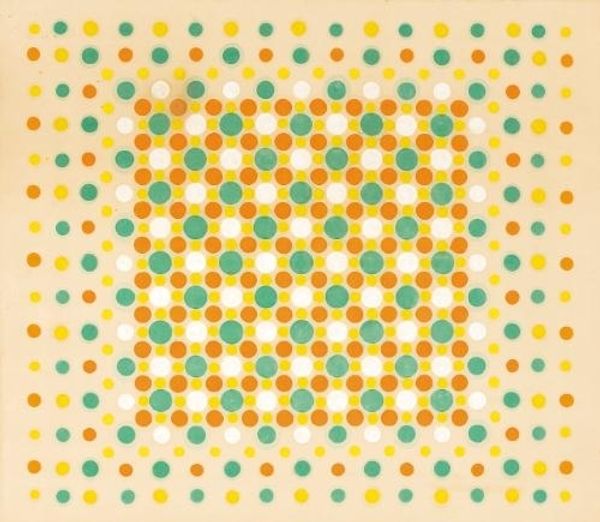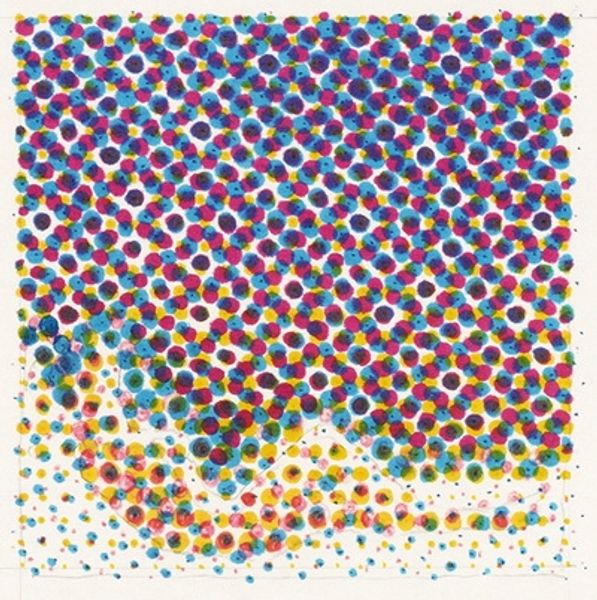
textile, acrylic-paint
#
kinetic-art
#
op-art
#
pattern
#
textile
#
acrylic-paint
#
geometric pattern
#
geometric
#
geometric-abstraction
#
line
Copyright: Julio Le Parc,Fair Use
Curator: Looking at this striking work by Julio Le Parc, titled "Serie 29D No. 1-1 8-8 1-1 8-8," the first thing I notice is the visual vibration. It's almost unsettling in its intensity! Editor: Unsettling is right. All those multicolored circles and squares fighting for space on what seems to be a textile surface…there's a tension between the rigid geometry and what appears to be flexible material. Do we know what type of paint was applied, Curator? And, more broadly, how his work reflects trends toward democratization of art making? Curator: Good questions! It seems that he chose to use acrylics, and indeed this speaks to an embrace of synthetic materials at the time, allowing him to create repeatable and increasingly exact geometric configurations. But stepping back from its pure construction for a moment, I'm fascinated by what all of these circular and squared forms evoke together; one could almost interpret the interaction between these basic units to represent harmony and discord. Editor: Harmony, maybe. Given his place in Op Art and Kinetic Art movements of the time, perhaps a challenge to perceptions would also be relevant. I think we’d see his exploration of geometric abstraction here as a step away from elitist traditional painting. He worked with accessible, industrial materials, creating a work for the masses and speaking to the increasing manufacturing and global distribution systems in place at the time. Curator: Absolutely, I agree. But also, the fact that he creates this dynamic arrangement using such simple forms—squares and circles – I think evokes fundamental symbolic concepts. Consider the Jungian reading of circles as wholeness and unity! He might also be implying movement—through this kind of calculated play with visual symbols and primary shapes. It certainly encourages a degree of participation, and a feeling of playfulness as a viewer. Editor: Exactly, but how complicit is the viewer here in being playful? The vibrant hues and the texture of the fabric surely engage in a capitalist cycle. It speaks to consumption of not only material but of labor as well—an intentional critique I think. Curator: That's an excellent point. It pushes us to think about who creates the images we are viewing, where the base materials came from. All in all, it's certainly a deceptively complex piece! Editor: Yes, deceptively simple looking but, at closer inspection, full of complex considerations of labor and consumption.
Comments
No comments
Be the first to comment and join the conversation on the ultimate creative platform.
